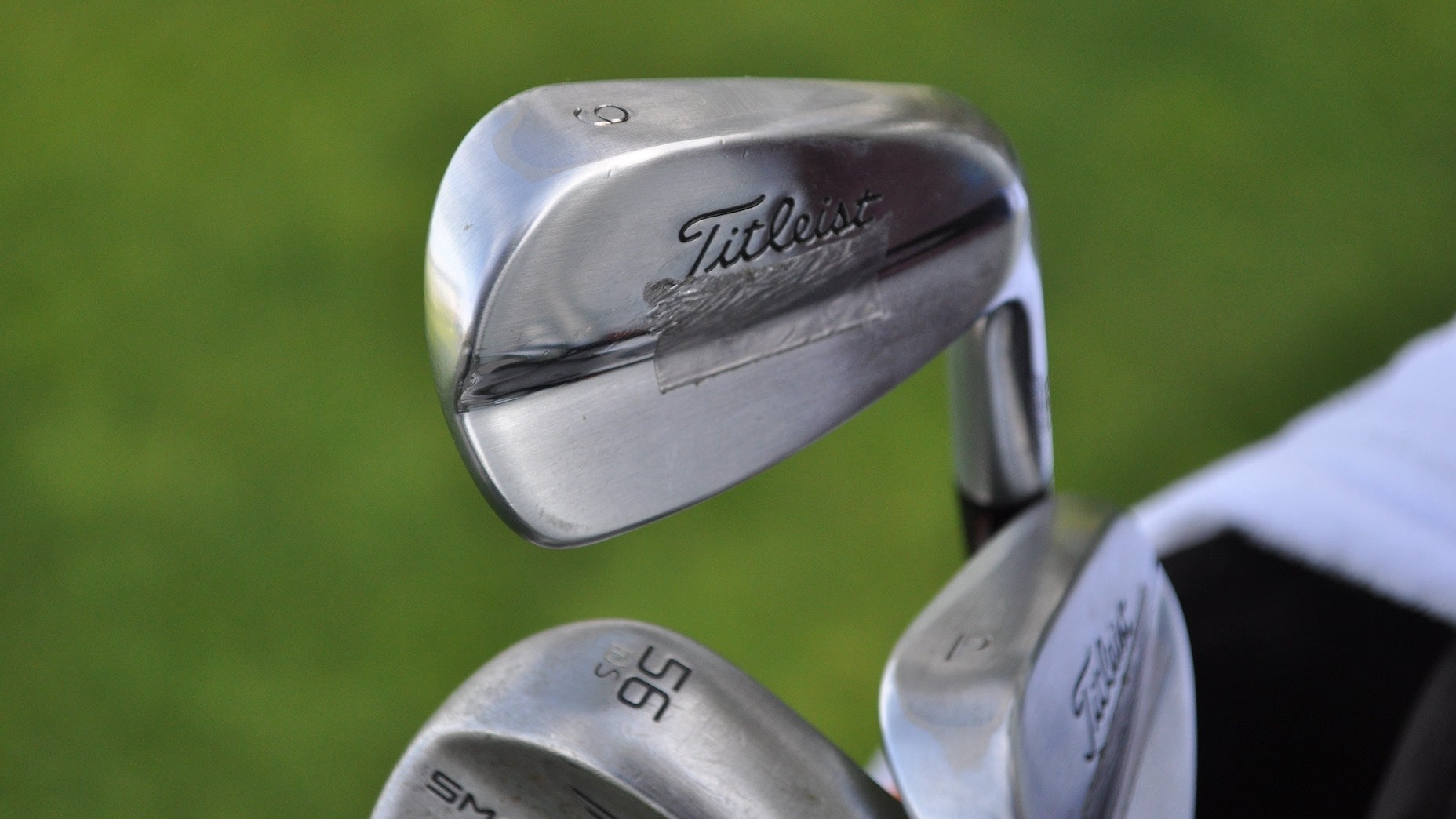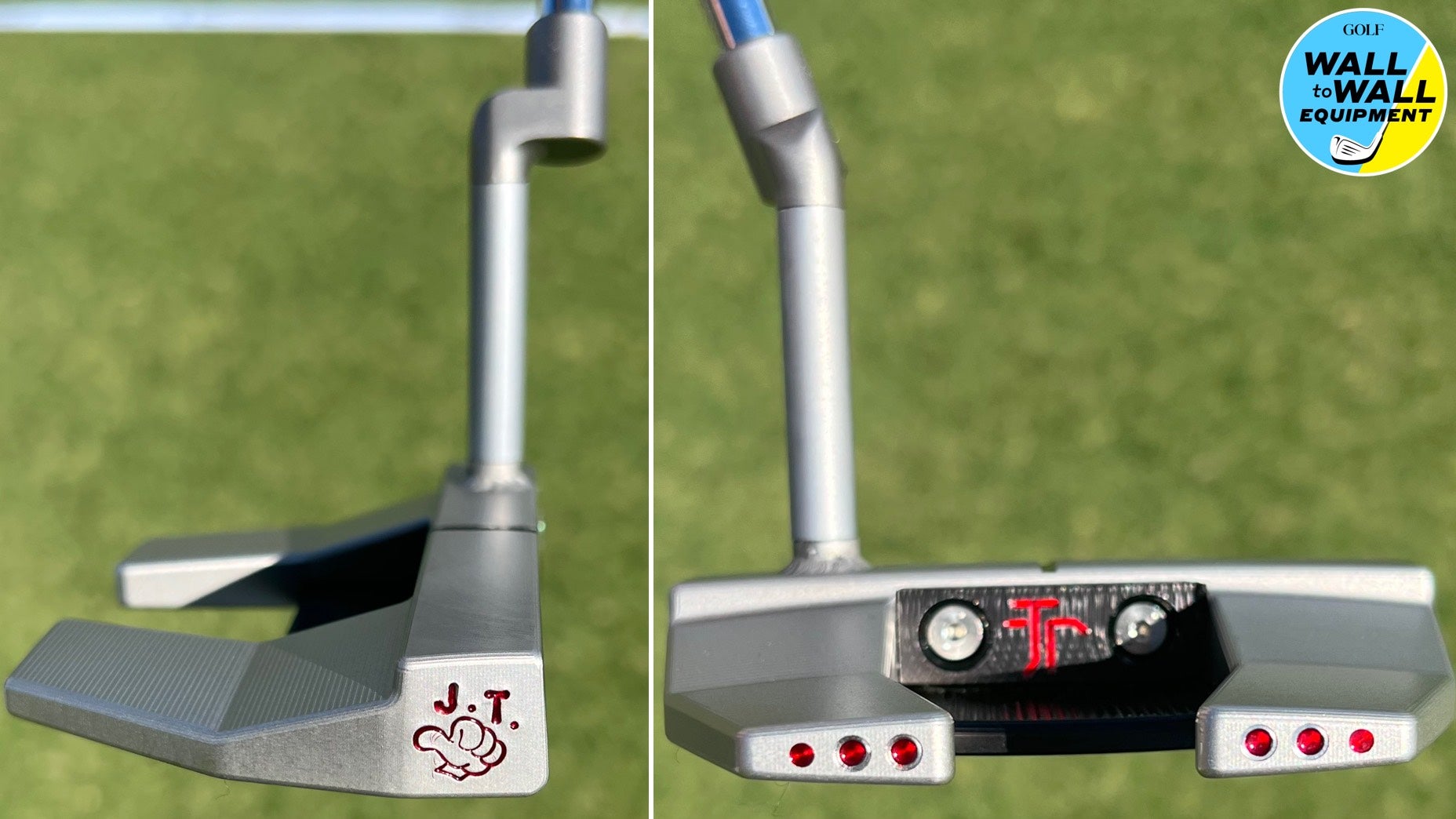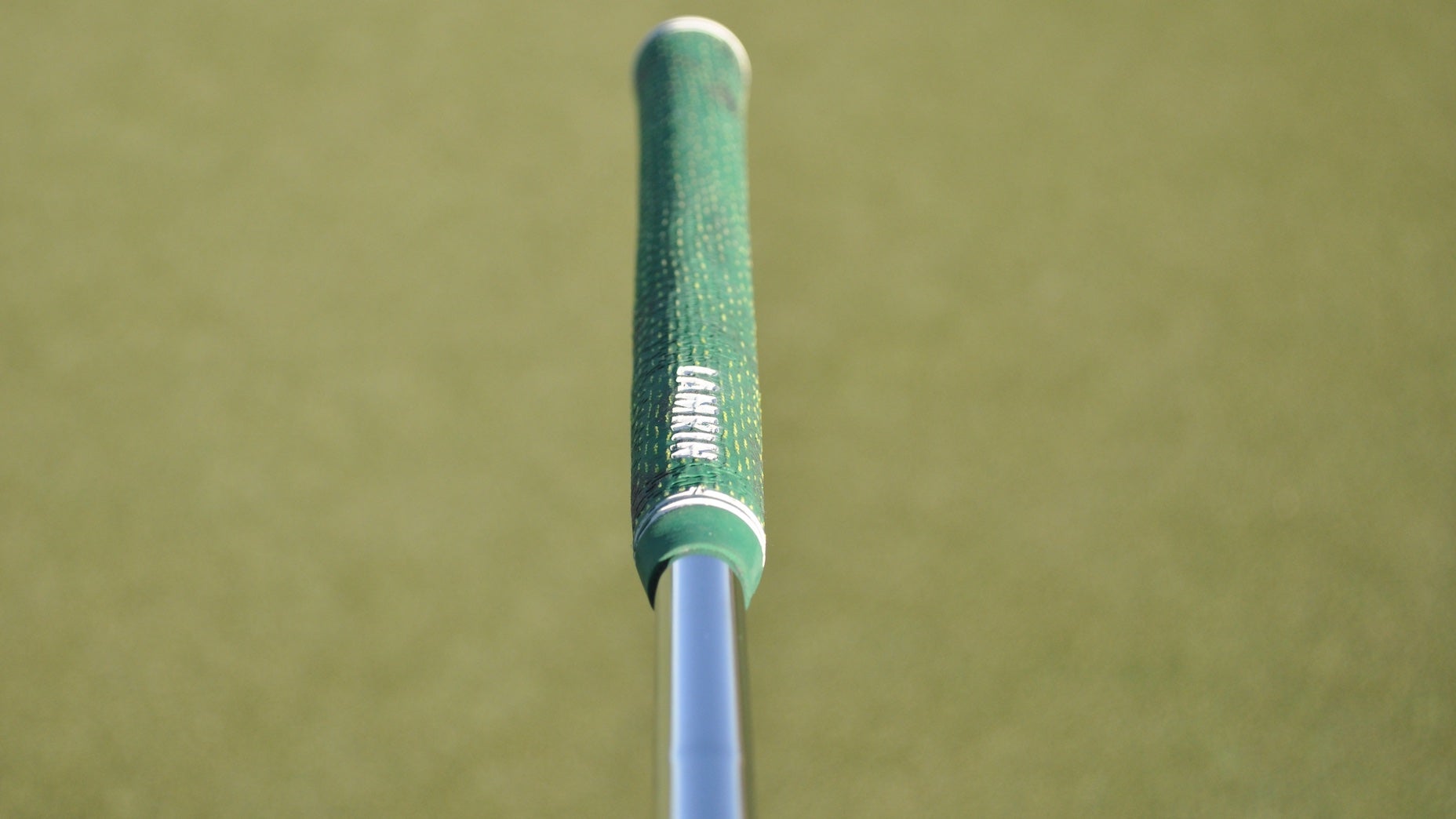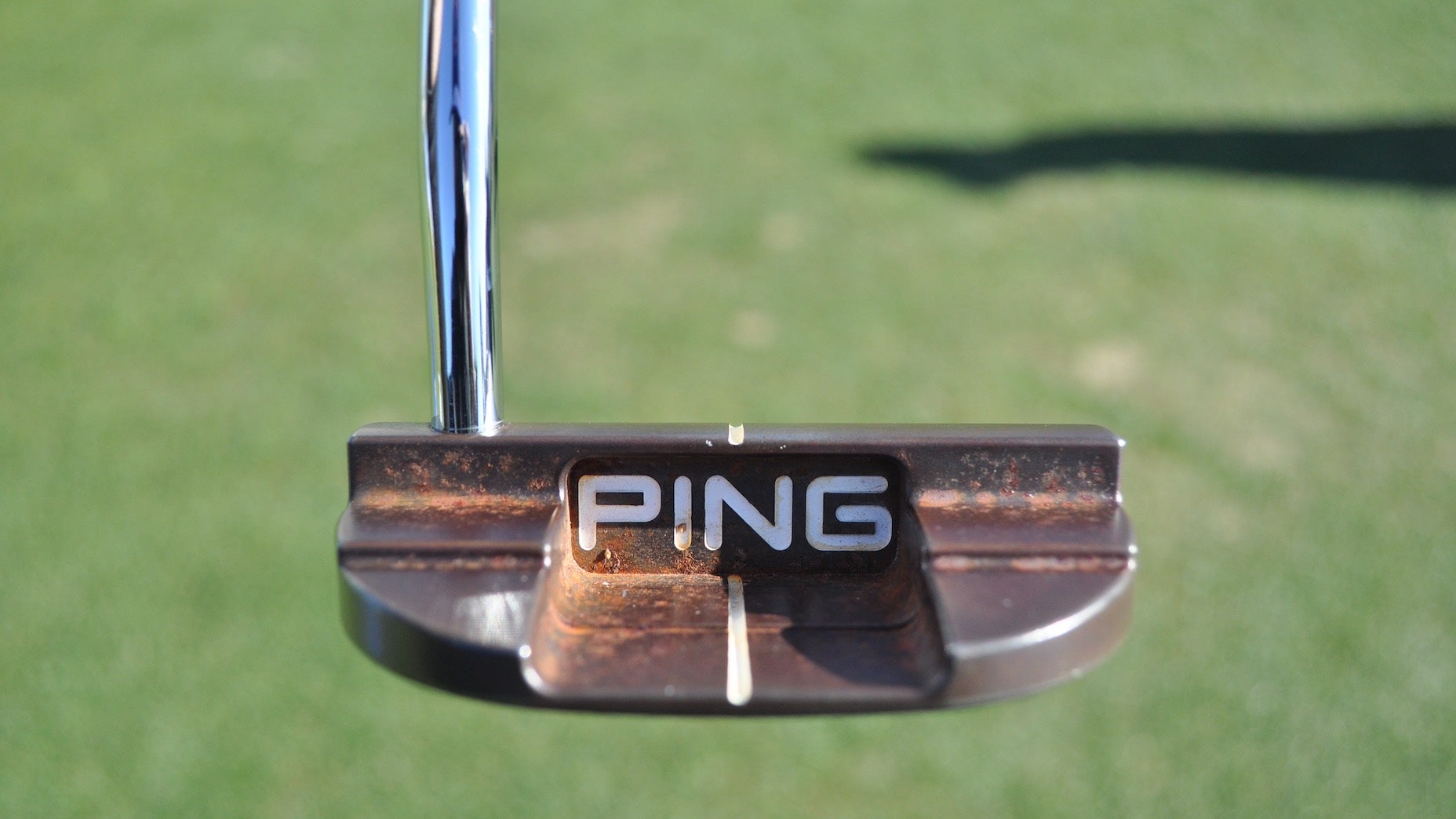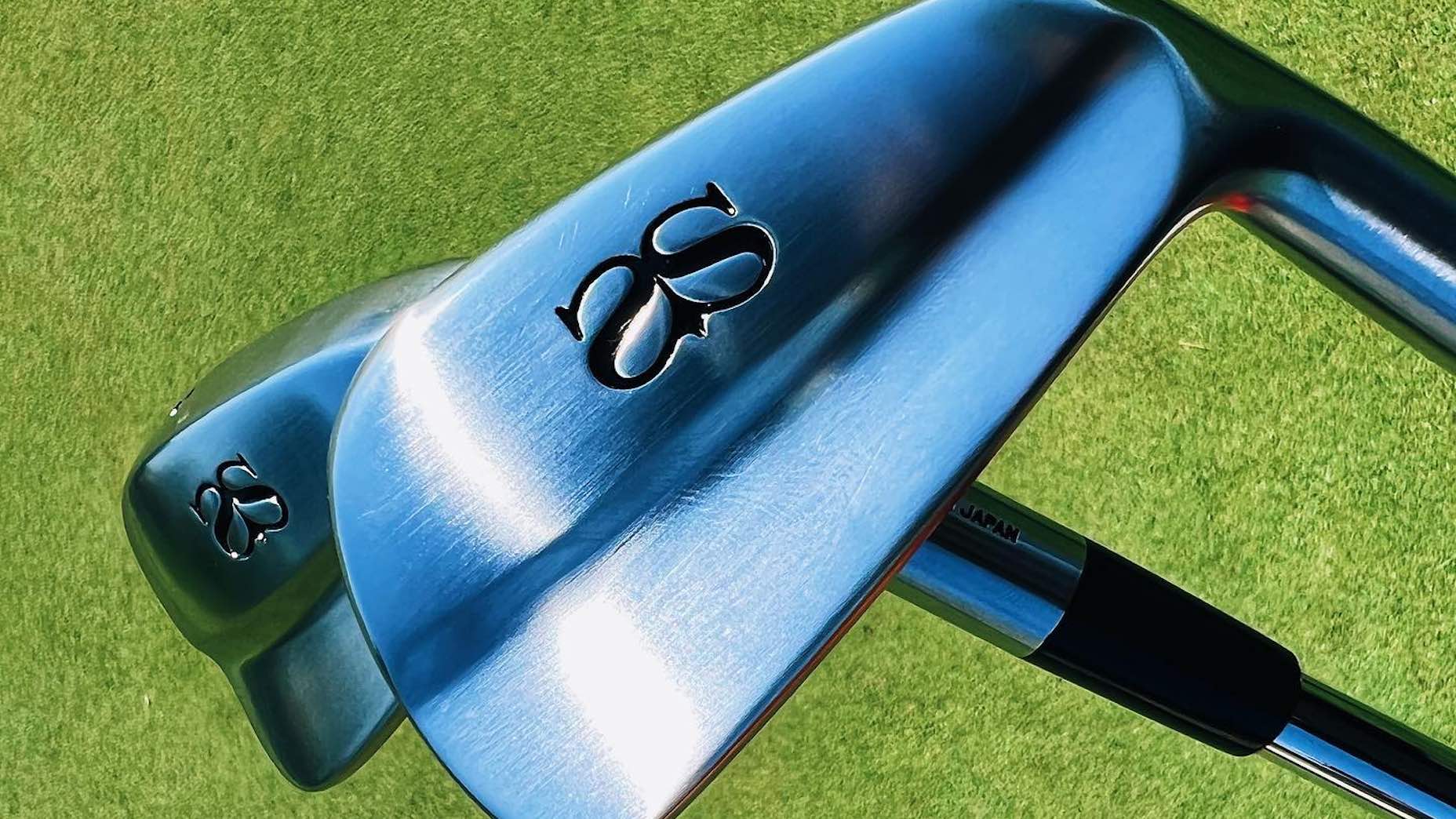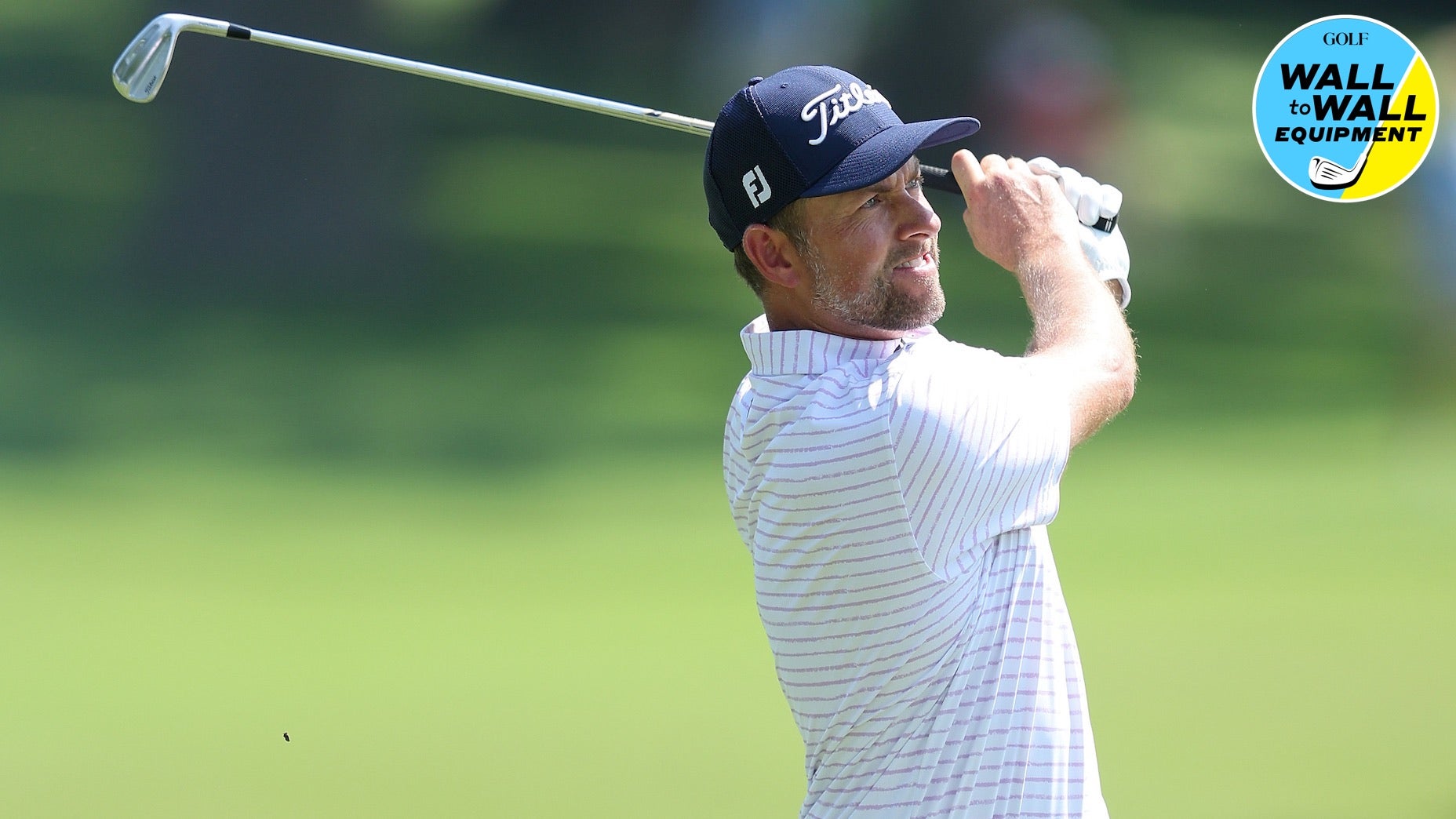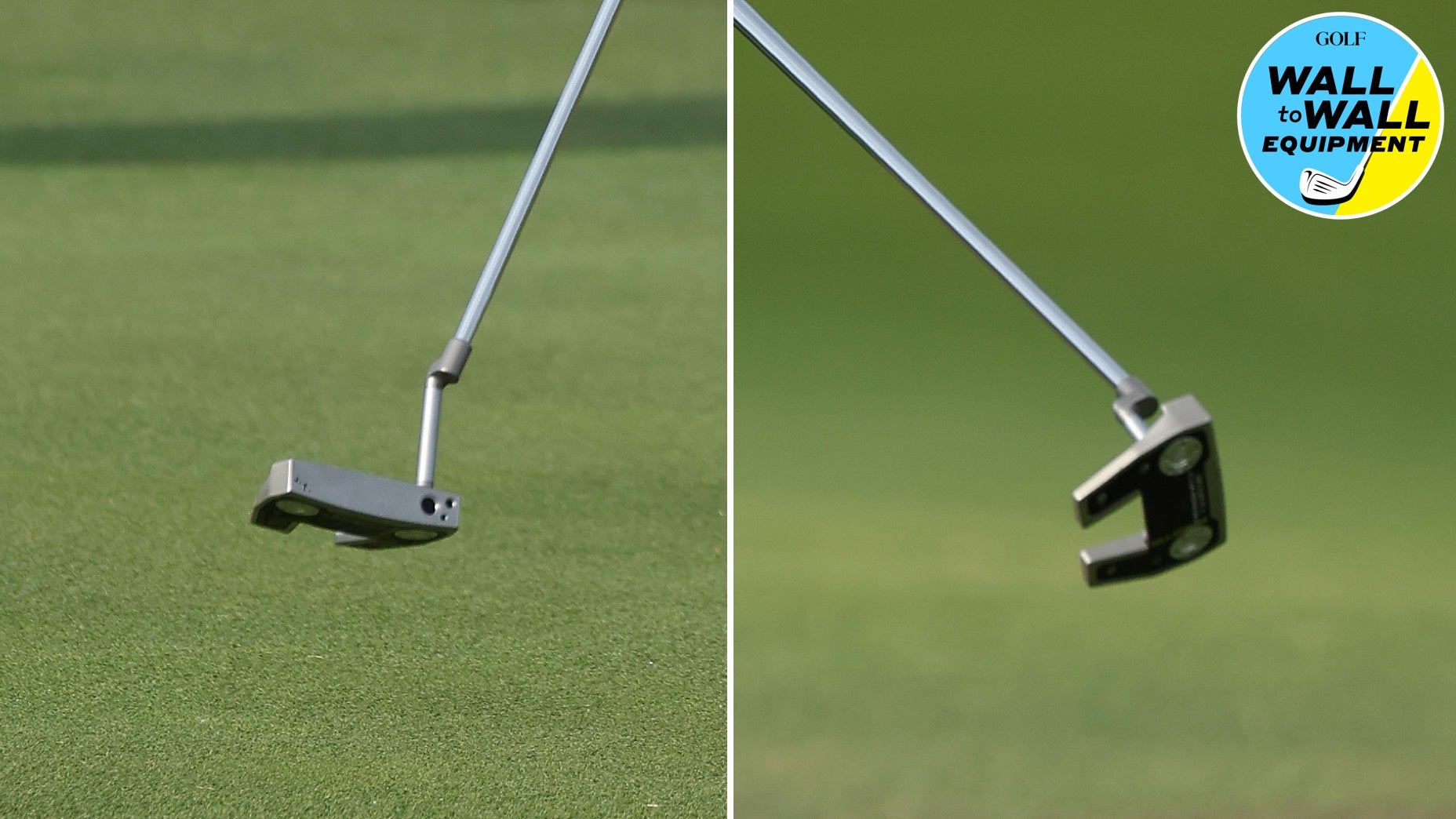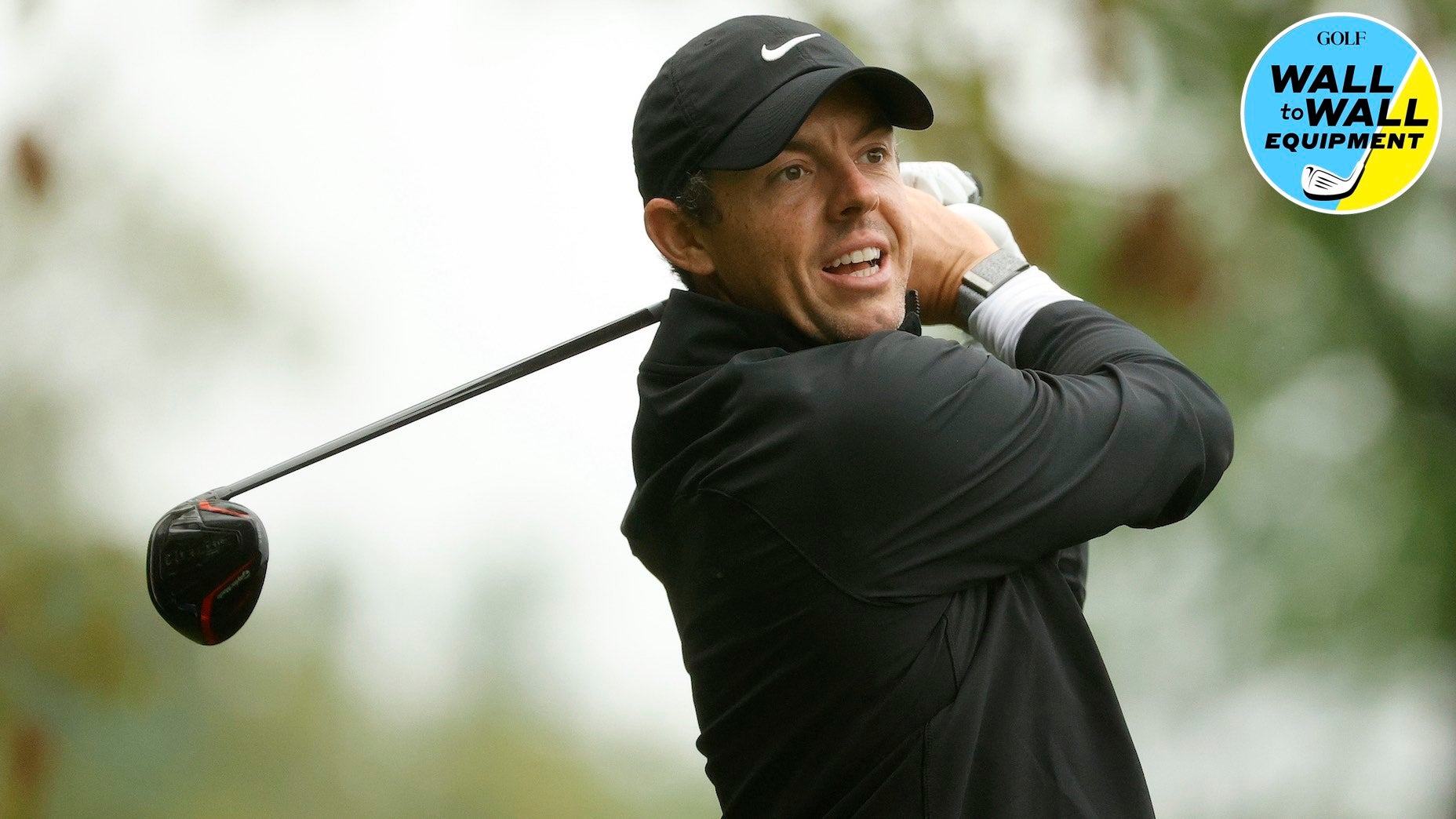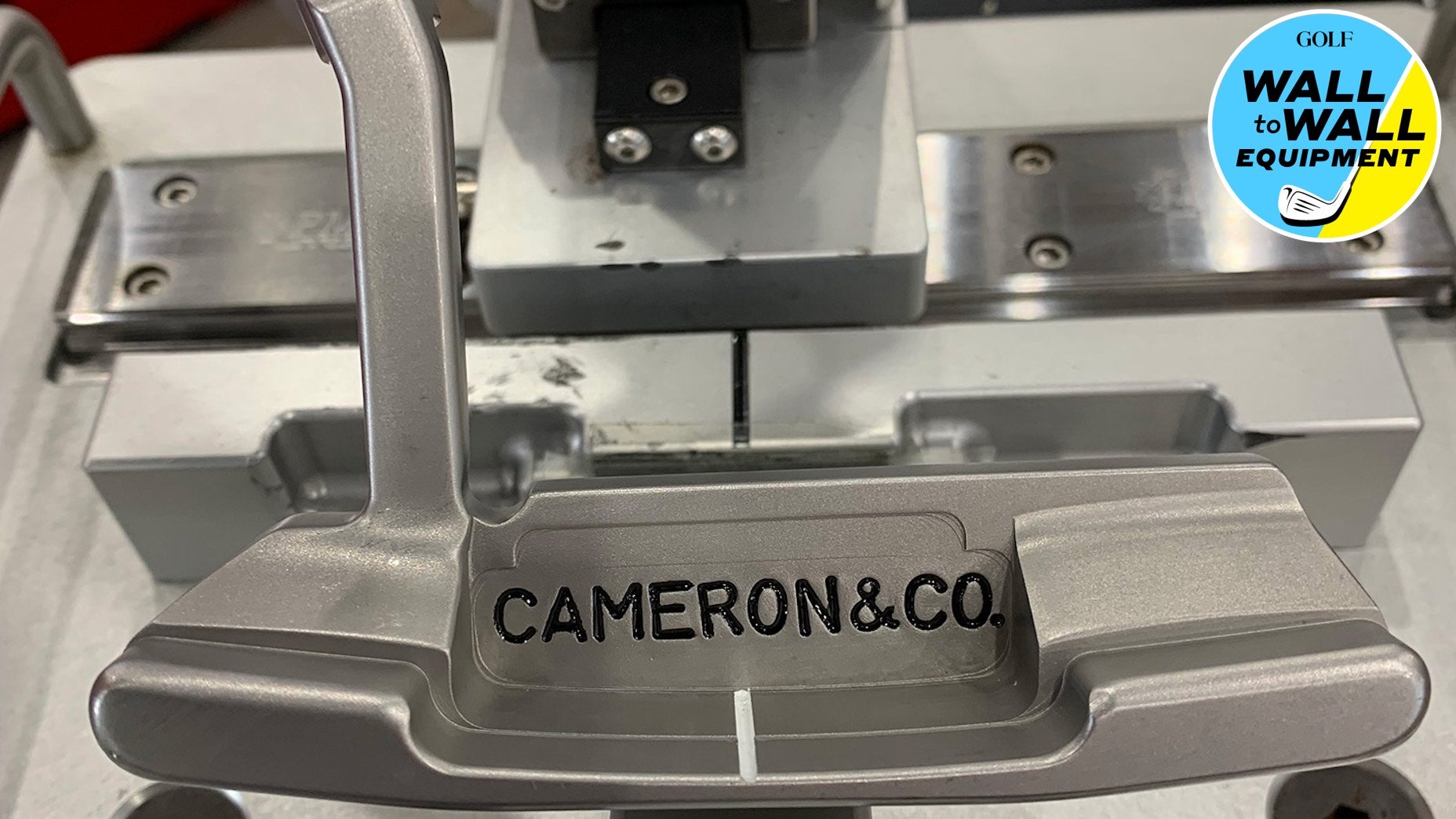Welcome to Wall-to-Wall Equipment, the Monday morning gear wrap-up in which GOLF equipment editor Jonathan Wall takes you through the latest trends, rumors and breaking news.
Unicorn sticks
All that talk about how traditional muscleback irons exist in a confined box that cannot be altered? Billy Horschel doesn’t want to hear it. The recent Memorial winner blitzed the field at Jack’s place on Sunday with a Titleist-heavy setup that featured a set of 620 MB irons — better known as the blade model in the lineup.
Gearheads might have spotted the subtle strip of lead tape on each head, but let’s talk about something that really makes Horschel’s irons special, dare we say a unicorn on the PGA Tour. A closer look at the sole reveals a section that was ground down — a gear clue of sorts.
According to Titleist Tour rep JJ VanWezenbeeck, Horschel had to make some extreme modifications to get the 620 MB to fit his game.
“Billy already loved the look and feel of the 620 lineup and wanted a one-piece forged construction,” VanWezenbeeck told GOLF.com, “so we were part of the way there.”
Billy Horschel's @Titleist 620 MB irons are bent a full club weak — or +3 degrees in bounce. Almost never see heads manipulated that much.
— Jonathan Wall (@jonathanrwall) June 5, 2022
Billy liked the look and wanted the bounce and offset created to achieve ideal strike location, spin rate. pic.twitter.com/vwoSCQQvvs
The other part of the equation was getting the irons to match his preferred strike location. Bounce is a term that’s often thrown around when discussing wedges, but in Horschel’s case, modification needed to be made to the sole of each iron to not only ensure consistent contact but turf interaction as well. Too little bounce would cause the head to “catch” and go through the ground in an inefficient manner, affecting even the best golf swing.
To ensure the head sliced through the ground, Titleist bent each head a full club weak to achieve the bounce and offset Horschel needed to match up the strike location and spin rate. Adding a degree of loft increases bounce by one degree, which meant Horschel’s 8-iron was now playing like a 9-iron at a “full club weak.” (The modification added 3 degrees of bounce to each head.)
Club builders rarely endorse going plus-or-minus 2 degrees of loft with an iron or wedge, but in Horschel’s case, the desire to play Titleist’s latest blade was reason enough to make the adjustments.
To ensure Horschel and his caddie didn’t get the irons mixed up post-bending, Titleist Tour rep Peter Bezuk also ground off the original numbers stamped on each sole and hand-stamped them to match their correct lofts.
While Horschel is likely one of the only players on Tour playing a set of this nature at the moment, he isn’t the first pro to bend a set of heads to this extreme. Back in 2020, Vijay Singh did something similar with a set of Mizuno MP20s, adding 3 degrees of bounce to each head in an attempt to get them to match an older set of MP4s.
“To be fair it was a bit of a guess hoping the bounce increase would get what we wanted,” VanWezenbeeck said. “Peter Bezuk nailed it [on the] first [try]. Now we use the original set as an example and match those.”
Split the difference
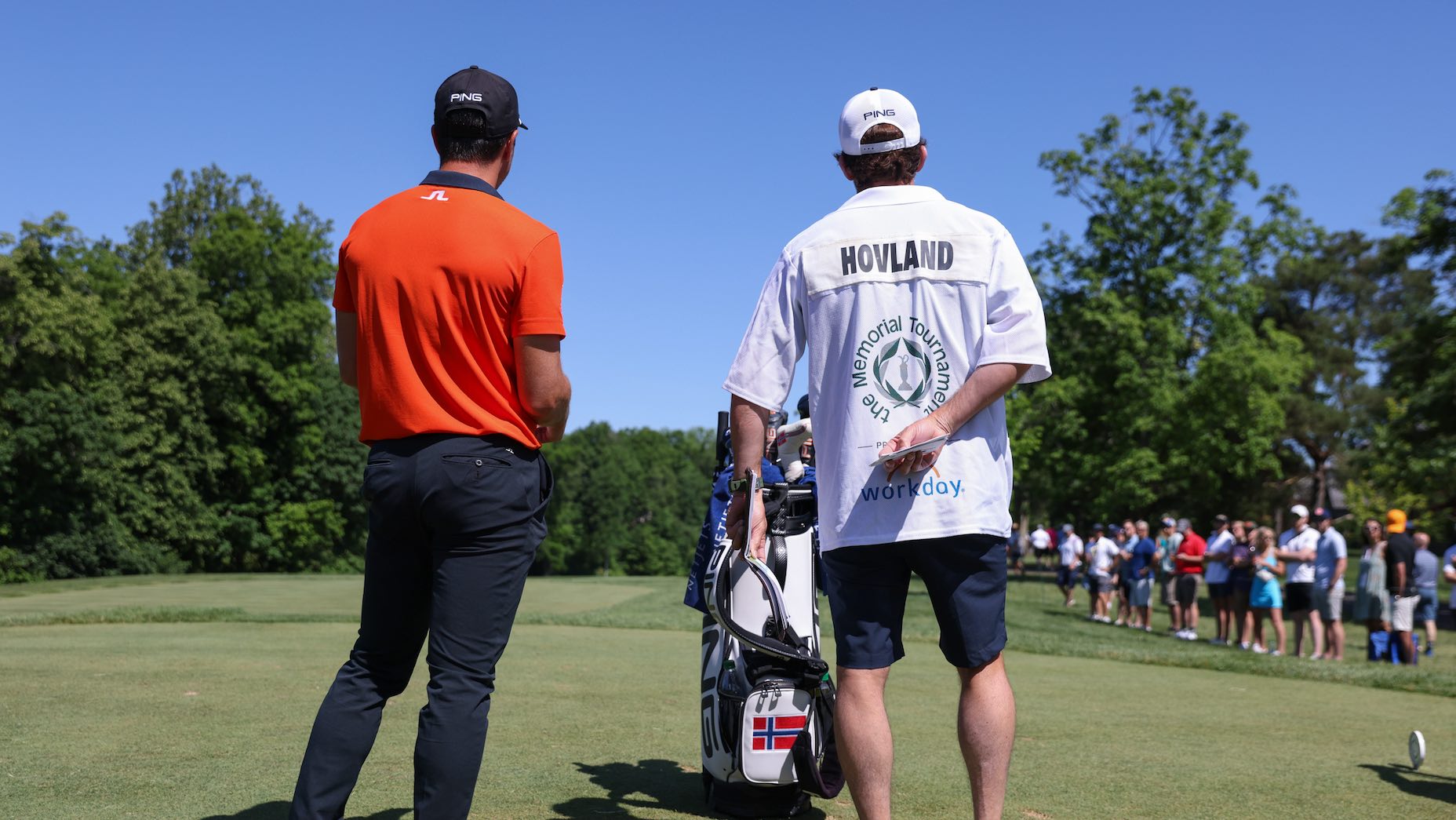
Viktor Hovland is like a lot of Tour pros who adjust their club makeup based on the setup and playing conditions. Depending on the situation, the Norwegian would regularly rotate between a Ping G425 Max 7-wood and long iron (utility or 3-iron) most weeks.
Hoping to find a club that would stop the constant game of musical chairs, Hovland worked with Ping Tour reps on a 19-degree Ping G425 hybrid that, according to rep Kenton Oates, “splits the difference” between the 7-wood and long iron with a carry hovering around 240-245 yards.
The versatile hybrid profile also makes the club a good option from both the fairway and rough. Hovland’s new hybrid is equipped with a Fujikura Ventus Blue 9X shaft at standard length (D8 swing weight).
Looking ahead
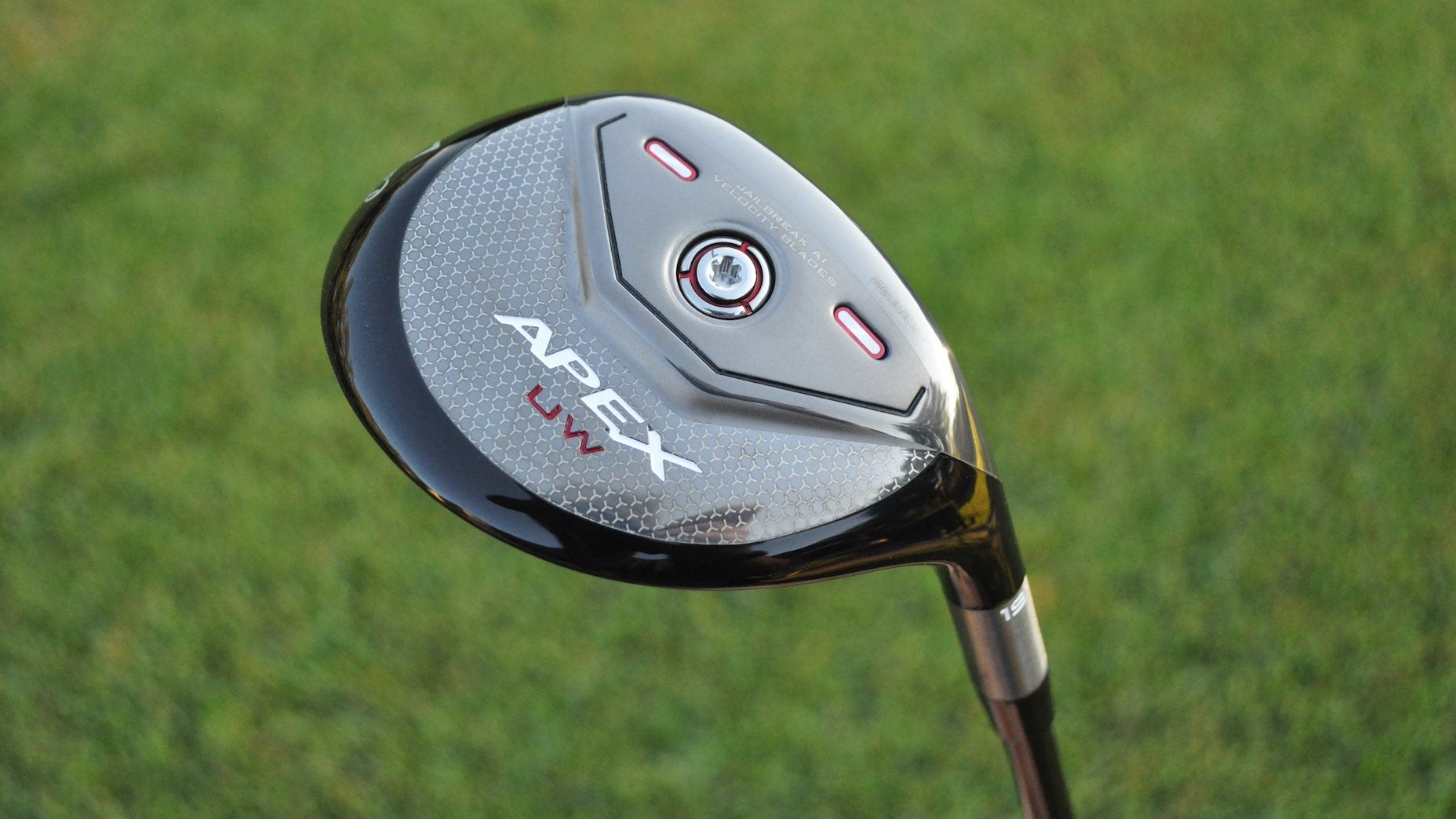
Speaking of 7-woods, Xander Schauffele’s latest club change helped solve a problem he was having with his high-lofted fairway wood. According to Callaway Tour rep Kellen Watson, Schauffele was seeing inconsistent spin on his go-to fade shot with an 18.8-degree (actual loft) Mavrik Sub Zero 7-wood.
His search for a club that generated 4,500 RPMs on the fade shot led him to test out an Apex UW with the exact same loft. During testing, Schauffele had no problem carrying it 220-225 yards with 4,500 RPMs of spin when he attempted to fade the ball.
“The club is really versatile,” Watson told GOLF.com. “Xander saw that during testing, and I think it’s a big reason why I could see him keeping it in the bag for the Open Championship. The spin is consistent, which is the most important thing, but he can also hit it low and high on command, too.”
Deal no more
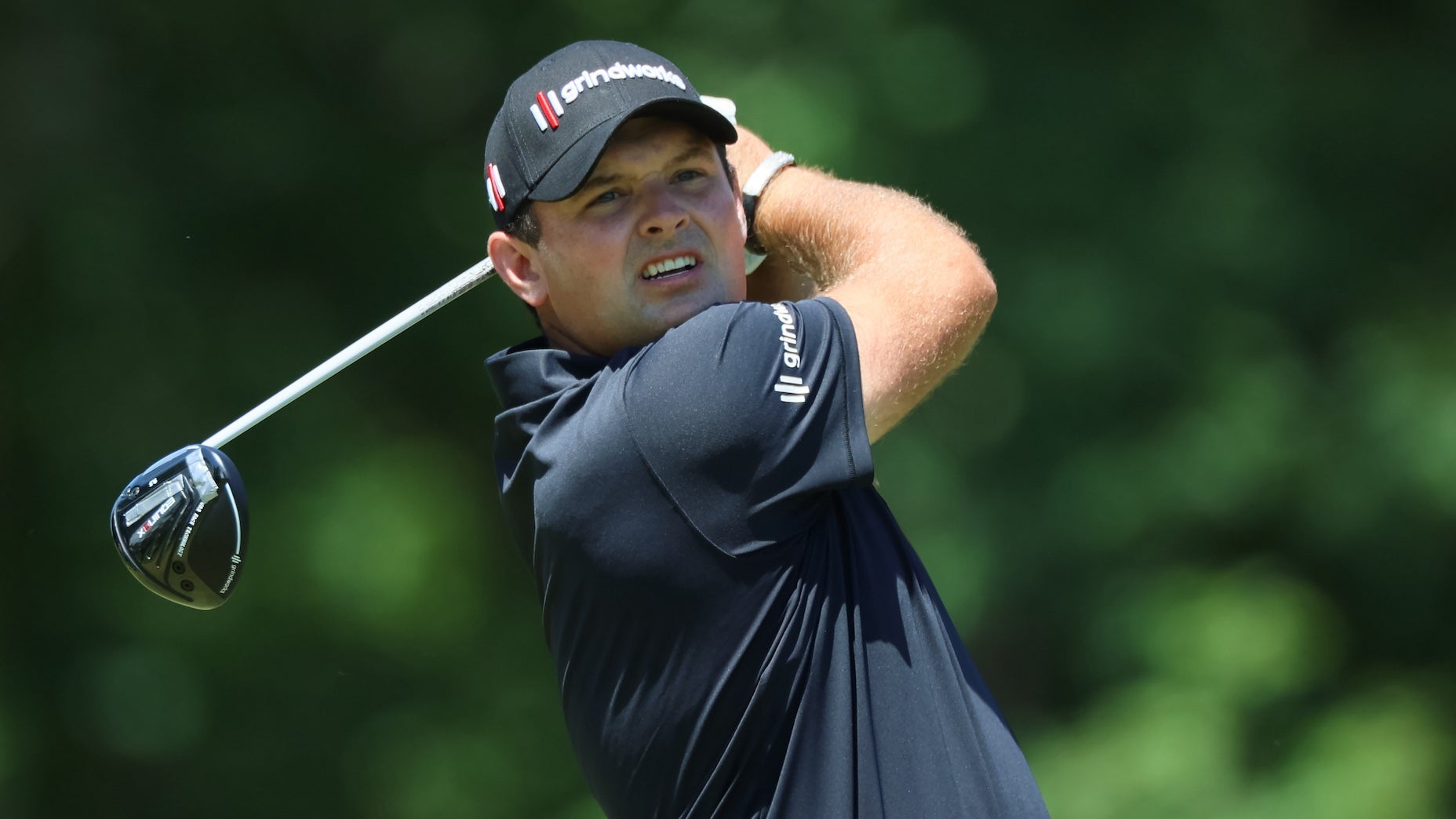
Patrick Reed’s deal with PXG didn’t even last 6 months. The former Masters champion was spotted at the Memorial using a Grindworks prototype driver — he put the club in play at the PGA Championship — and wearing the company’s hat. Reed has been using Grindworks irons and wedges since last year, but his driver and hat were tied to a deal with PXG, who signed him to an agreement in January.
Reed hadn’t played a PXG driver since the beginning of May but continued to wear the hat. In wake of the split, GOLF.com reached out to PXG for comment but has yet to hear back.
You’re gone
Arguably one of the most bizarre gear disqualifications in the last decade played out on Thursday at the Memorial. Hideki Matsuyama was shown the door after the paint on the face of his TaylorMade 3-wood was deemed to be non-conforming by rules officials.
Paint in the grooves of a fairway wood — or any club, for that matter — isn’t grounds for disqualification. But since the paint substance could be felt above the face and out of the grooves of the club it was deemed non-conforming.
In a press conference with reporters midway through the round, Steve Rintoul, a PGA Tour senior tournament director, said that a member of his committee had been sent pictures of the club and was asked whether they had seen it.
“Another person in the world of golf,” he first said. “We don’t need to get into that.”
Hideki Matsuyama gets DQ’d for a marking on the face of his fairway wood.
— Jonathan Wall (@jonathanrwall) June 2, 2022
The 📸 🐐 @gdm43pga managed to snap this one of Hideki’s at Muirfield. Gotta assume the white areas, which were likely meant to frame the face and center, caused the DQ. Wild stuff. pic.twitter.com/Ek4Oj1xeH9
“Another person in the golf industry,” Rintoul said when questioned again.
“You’re not willing …” a reporter started.
“I don’t think it’s important here,” Rintoul said. “It would have come across sooner or later. It was going to be on camera this afternoon.”
Rintoul said the message was received when Matsuyama and playing partners Rory McIlroy and Patrick Reed were on the first green, and he met Matsyama on the fifth tee. There, after Matsuyama told Rintoul that he had used the 3-wood, Rintoul took pictures of it and rubbed his fingernail across the substance, then took his evidence back to rules officials and told Matsuyama to keep playing.
“These equipment rules can get real finicky real quick,” Rintoul said.
Rintoul described its texture as “White Out,” and rules officials determined that was enough to be a violation of Rule 4.1a (3).
Quick-hitters: Jason Day switched into a TaylorMade Stealth Plus driver (9 degrees) and P770 long irons (3-4). … Jordan Spieth tested two different Scotty Cameron putters, including a welded flowneck Teryllium Newport, but ultimately stuck it out with his 009. … Collin Morikawa used a TaylorMade Spider GT Rollback mallet after testing several different GT models. … Sahith Theegala went from a 35.25-inch Ping Karsten Anser 2 TR 1966 putter into a 37-inch version for better posture at setup. … Daniel Berger added three Titleist Vokey SM9 wedges to the bag. … Viktor Hovland inserted a Callaway Jaws Raw Prototype lob wedge. … Abraham Ancer replaced his black Odyssey White Hot RX #5 with a silver White Hot OG #5. … Mackenzie Hughes added exactly 6 grams of hot melt to his Ping driver and 3-wood (neutral location in the head) because he loved the sound of his 7-wood and wanted to match it up with the other woods.
Want to overhaul your bag for 2022? Find a fitting location near you at GOLF’s affiliate company True Spec Golf. For more on the latest gear news and information, check out our latest Fully Equipped podcast below.
